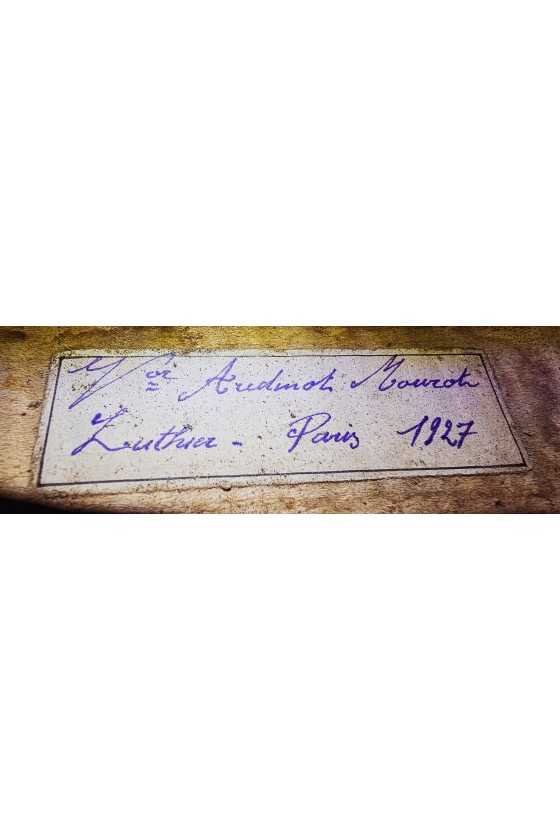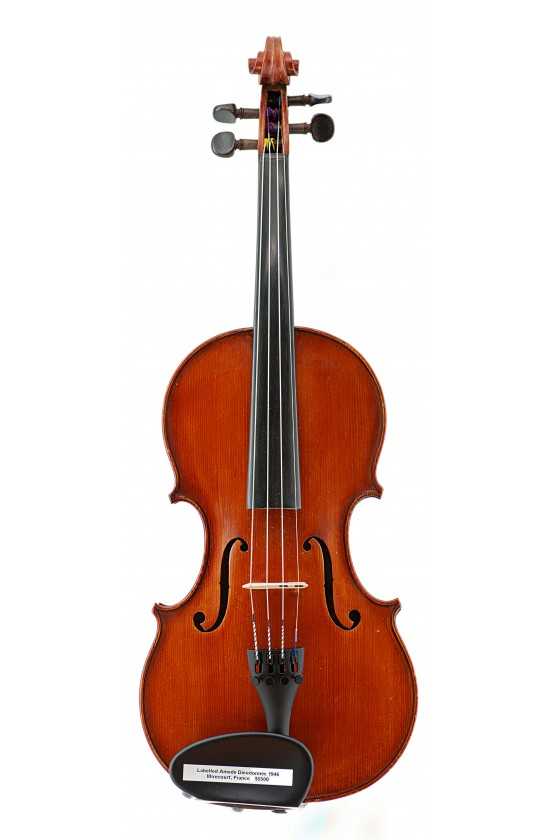Audinot-Mourot Violin 1927
Victor Audinot (1870-1943), also known as Audinot-Mourot, hailed from a family deeply connected to the art of instrument making. He was the son of Mirecourt luthier Charles Audinot and was mentored by Francois Chardin (1827-1907) and Telesphore Barbé (1822-1892). Of these mentors, Telesphore Barbé, renowned for his craftsmanship, profoundly impacted Victor’s development as a luthier. Barbé’s expertise was honed during his tenure with the esteemed Jean Baptiste Vuillaume in Paris, where he produced a remarkable three violins per week. Victor Audinot’s legacy in the world of Lutherie is a testament to the rich tradition and influence passed down through generations.
Victor briefly worked in Mirecourt, a town known for its luthier tradition, before moving to Paris and setting up his workshop on the historic Rue Truffaut in 1913. He dedicated himself to his craft until his retirement in 1936. Victor’s expertise was passed on to five of his six sons and many other aspiring luthiers who sought to learn from him.
During his career, Victor gained renown for creating exact replicas of classical instruments, paying meticulous attention to every detail. Notably, he crafted an exceptional copy of the ornately decorated Stradivari violin known as the ‘Sunrise’, showcasing his skill and artistry in replicating the masterpieces of renowned luthiers. Signed internally: ‘Vor Audinot-Mourot et fils / Luthier à Paris / année 19...’ V. Audinot-Mourot & Fils / Luthiers / 30 Rue Truffaut Paris.



















































